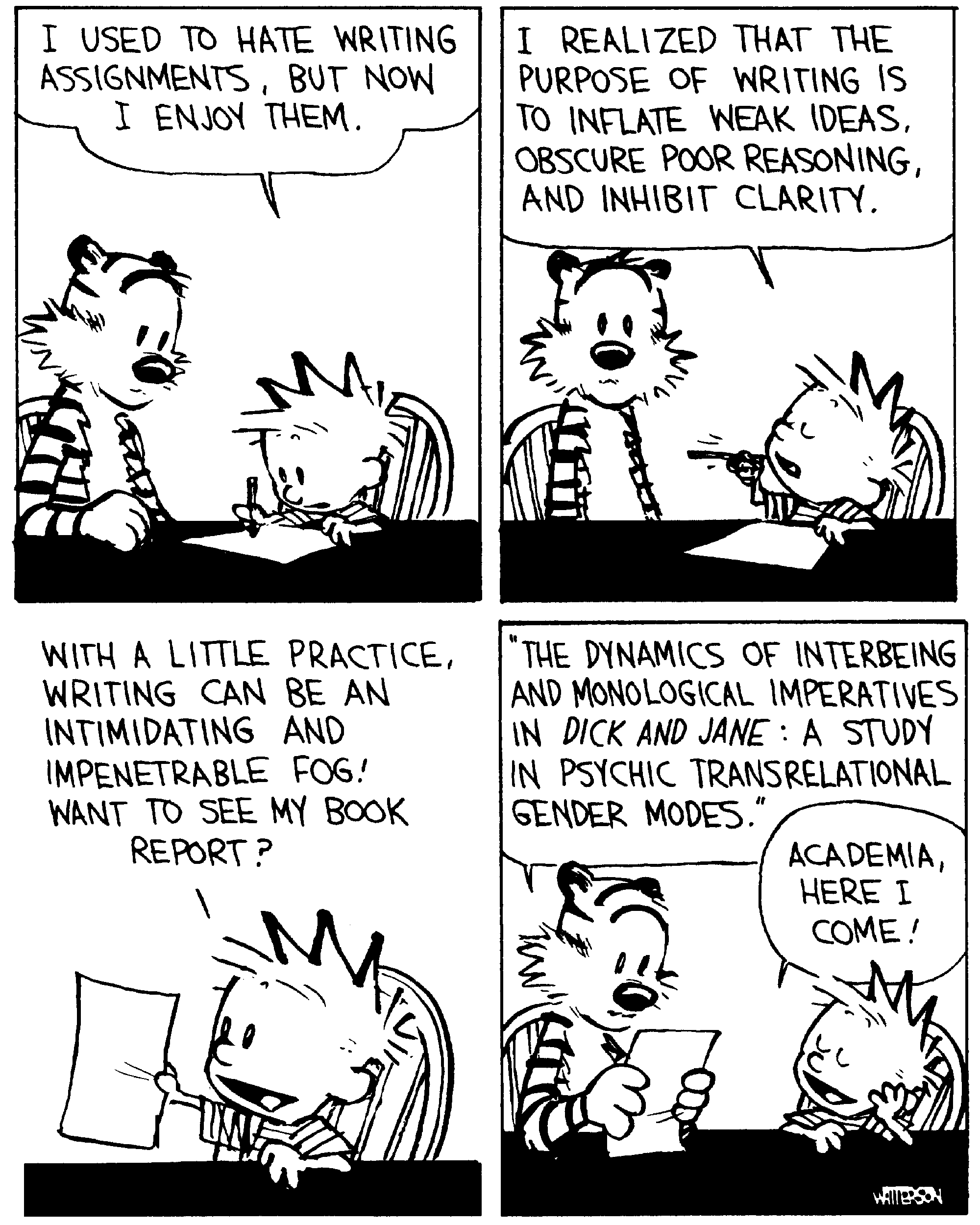Writing: Marketing's Job One
 Writing is the most important part of marketing. Yes, that's right. Oh I know, research and art direction and SEO and so forth are all important. But writing is the most important.
Writing is the most important part of marketing. Yes, that's right. Oh I know, research and art direction and SEO and so forth are all important. But writing is the most important.
It's the way we impart ideas and concepts to one another. It was true in the days of the Magna Carta and it is true today.
Think about it. Even today, twitter, is totally word-centric and, let's face it, the heavy lifting of the visual web is conveyed with words.
Your words are Job One. Treat them that way. Make a difference in your marketing through good, terse writing.
Know your audience
You are not writing for the engineer who briefed you about his brand new product. You are writing for the buyer, who knows less (and cares less) than you may think. You may see yourself as selling features, but your prospect is buying benefits (You are selling a drill but they are buying a hole).
Do your research so that you visually have the ideal prospect in mind. Then write to that one person.
Explain your TLAs (three letter acronyms) with a first reference explanation in parentheses. Don't think that a bunch of unexplained terms will impress an already distracted reader.
Chunking
Today's short attention spams, driven by multi-tasking, incoming e-mail, and hundreds of other distractions, force you to write a certain way. I can it chunking. You are writing in bite-size pieces that can convey information very quickly. Active voice. Short sentences. Lively language.
A chunk may be a paragraph. Or two. It is probably wrapped with a subhead that begs to be read. But, in the end, its a whole thought that makes sense even when lifted out of context. You should assume that your reader is skimming the copy, looking for interesting language, rather than pouring over your lavishly loquacious prose.
 One rule I use is to start writing and then, at some point, go back and chop off the first one or two paragraphs and see how it reads. Chances are you've just accelerated the comprehension factor.
One rule I use is to start writing and then, at some point, go back and chop off the first one or two paragraphs and see how it reads. Chances are you've just accelerated the comprehension factor.
You see, that starter copy was just to get the old creative engine primed. The first two paragraphs were for your benefit, not your reader's.
And dont publish too soon. Keep fiddling with your copy. Let it sit a day or two between reads if you can so that you can return to it cold. Remember, words are cheap. About four or five drafts later, you may be on to something.
The 3-30-3 Rule
This tip reinforces the idea that each thing you write should be aimed at motivating the reader to go further.
You have 3 seconds to grab his or her attention. Make it count with a powerful headline. If you have succeeded, your reader will be motivated to move to the first paragraph (that was your goal, wasn't it?).
Now, you have about 30 more seconds to motivate your reader to keep reading. Use that opportunity wisely with sparkling and lively language.
If you succeeded, you now have bought about three minutes for the reader to absorb the rest of your message. And, that my friend, is about all the time you can hope to have for your message (your brochure, your video, your web page).

Need I say that your words should be spelled correctly and your syntax tight and clear so that the reader isn't slowed trying to make sense of your clever construction?
Be bold
Ad giant David Ogilvy says that about 80 percent of the readers will not get past the headline. So it carries the weight of your entire communication. Make it count. Forget a leisurely unfolding of the topic. Hit your reader in the face. Hard.
There is just too much competition out there to be subtle. Yankelovich research says we are exposed to 5,000 marketing messages per day. Subtly is invisible.
Create word pictures
Your copy should make vivid imagery appear in the reader's mind. Use metaphor and simile (and, what the heck, even a little onomatopoeia) to enable the reader to see himself or herself using your product or service.
Get some help
'Shameless plug alert. Besides buying a copy of Strunk and White's Elements of Style and a synonym dictionary, you should consider what 25 years of writing experience could mean for you. I have written about everything from technology to politics for a variety of hard-to-please clients. That makes me kind of an expert. Just sayin'.
I just finished a project for a company who's CEO wasted two years refurbishing the website because he wanted to write it himself.
Finally, he gave up and I finished the assignment in less than two weeks.
Writing is a skill just like throwing a curve ball or spot welding or biz dev. Doing a lot of it gives me confidence and knowledge that I can do a good job for you. I bring an outside perspective that you need to convincingly portray your product to your market. And I can do it faster than you can do it for yourself.
I would like to discuss your next project. The deadline isn't getting any further away, you know.
Some additional reading
http://www.copyblogger.com/links-20120420/ - Seven lnks to improve your writing.
http://blog.kissmetrics.com/david-ogilvy/ - Ogilvy's big tips on writing copy that sells
http://en.wikipedia.org/wiki/Onomatopoeia - What does that mean anyway?
http://www.marketing-made-simple.com/articles/promotional-clutter.htm#.T89l2e1cKA0 - Some thoughts on breaking through the clutter
http://www.copyblogger.com/persuasive-content-marketing/ - 58 ways to perk up your persuasive writing

 Home
Home Services
Services Blog
Blog About
About Contact
Contact
